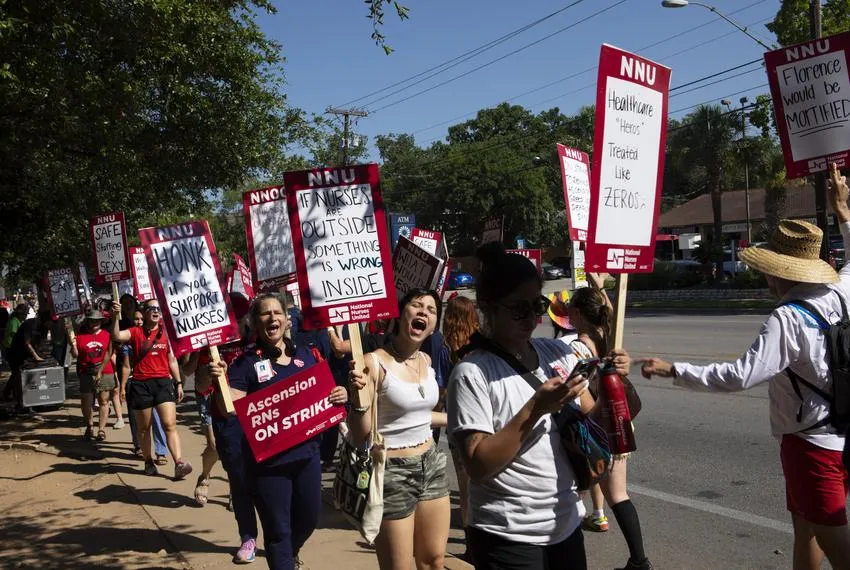
Texas unions are on the rise, the Bureau of Labor Statistics reports.
But we knew that already, right? Unions in Texas are winning in ways not seen in decades. Pioneering organizing in the private sector by nurses, auto workers, journalists, baristas, mental health workers, building trades workers and other categories has accelerated to levels not seen in decades. Much more is in the works.
Now, the annual BLS estimates of union membership are reflecting large steps workers have taken.
“We are seeing a union renaissance in Texas and across the nation,” Texas AFL-CIO President Rick Levy said.
“Working people understand more and more that unions are the clearest path to building better livelihoods and improving their work lives,” Levy said. “Workers who get together and speak up together can win together.”
Spurred by private-sector organizing, the annual BLS state-by-state estimates of union density released today show that in 2022, 4.1 percent of Texas workers belonged to unions; in 2023, that percentage rose to 4.5 percent. BLS states union member population in Texas rose from 518,000 last year to 586,000 this year.
The number of Texas workers covered by union contracts but not necessarily union members rose from 643,000 in 2022 to 701,000 in 2023, going from 5.1 percent to 5.4 percent.
Even better news: the AFL-CIO tells us BLS numbers do not include workers who have achieved union certification but have not yet completed a first contract. That means, for example, more than 1,000 nurses and interns at Ascension Seton Medical Center in Austin are not yet in the numbers, along with hundreds of Starbucks workers and Austin American-Statesman journalists.
“Make no mistake, Texas has a long way to go to build union membership,” Levy said, “but a turnaround is happening before our eyes.”
The rise of unions, and worker awareness, in and since the pandemic demonstrates anew that nothing about Texas’s status as a so-called ‘right to work’ state prevents union organizing. Unions are at historic levels of popularity in polls, and the shift toward more private-sector organizing — public-sector organizing has long led Texas union membership numbers — is taking hold.
Texas union membership numbers rose at a faster rate than national numbers, where unions added 191,000 members despite declines in some parts of the nation in public employee membership that are not related to organizing. Usual caveat: BLS does not conduct a formal census, and the methodology the agency uses is subject to statistical variation.
See BLS state-by-state union membership numbers: https://www.bls.gov/news.release/union2.t05.htm
BLS statement: https://www.bls.gov/news.release/union2.nr0.htm
